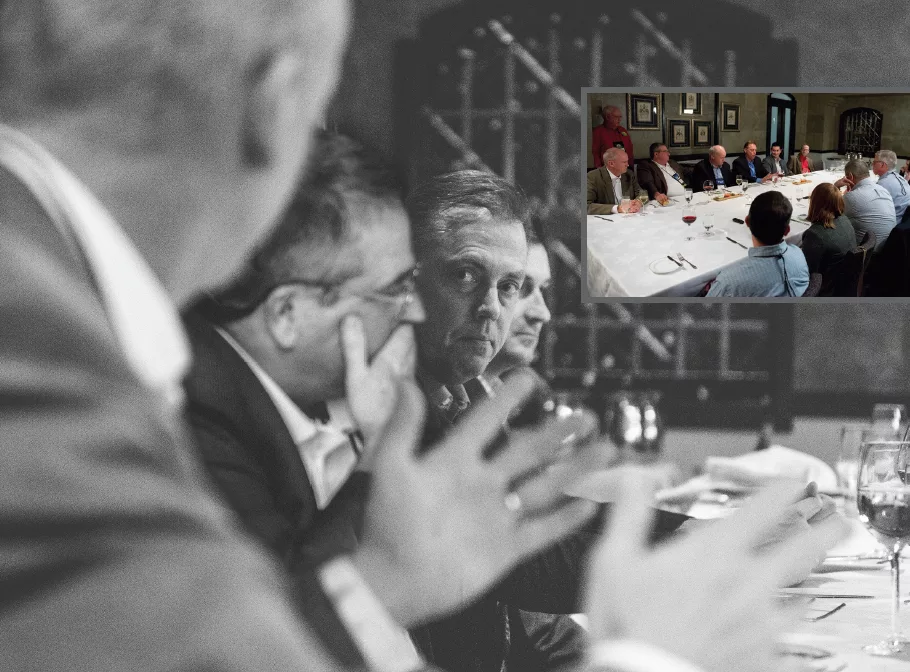To get leading dealers’ take on a number of current topics — and to facilitate debate and dialog with one another — Farm Equipment editors recently gathered up four executives from its Dealership of the Year Alumni Group for a first-ever discussion in a private, informal group dinner.
Joining the Farm Equipment editors were four of the industry’s most influential dealer groups, together encompassing more than $1.5 billion in annual sales. Participants included Steve Connelly, vice president of Midwest Agriculture, RDO Equipment; Moorhead, Minn.; Leo Johnson, partner, Johnson Tractor Inc.; Janesville, Wis.; Mark Foster, regional manager/partner, Birkey’s Farm Store; Champaign, Ill.; and Clint Schnoor, president, Agri-Service LLC, Twin Falls, Idaho.
A select excerpt of a much broader conversation that occurred among the dealers and the Farm Equipment team is shared below in the same type of Q&A format used during the dinner meeting.
Q: With the high levels of used inventories in high horsepower tractors, what is your approach to get aged equipment moved?
Steve Connelly, vice president of Midwest Agriculture, RDO Equipment: “We’re getting better with our internal processes and understanding so we aren’t taking trades on, or even quoting, units that don’t sell well, even if it means losing the sale. If we’re going to trade in a 9770 and we’ve got 45 of them and we sold 15 last year in that region, why would we take another one in?
“And we now have our own Internet sales team, so calls on used listings are directed to one department. That was a game-changer for us — not having our field sales team in say, Moorhead, Minn, dealing with the guy from South Carolina on a piece of used they didn’t know that much about anyway. We only want our field people worried about the guys within their area of responsibility (AOR) and fully managing their share of wallet.”
Participants
The Dealership of the Year Alumni participating in this special forum represented $1.5 billion in annual sales:
Steve Connelly, Vice President of Midwest Agriculture, RDO Equipment
A 70-store John Deere dealer group with locations in North Dakota, Arizona, California, Minnesota, Montana, Oregon, South Dakota, Texas and Washington and another 32 international locations (2010 Dealership of the Year).
Leo Johnson, Partner, Johnson Tractor Inc.
A 4-store Case IH dealership with locations in Wisconsin and Illinois (2012 Dealership of the Year).
Clint Schnoor, President, Agri-Service LLC
An 11-store AGCO dealer group in Idaho, Oregon and Utah (2012 Best in Class Dealer of the Year)
Mark Foster, Regional Manager/Partner, Birkey’s Farm Store
A 14-store Case IH dealership with locations in Illinois and Indiana (2007 Dealership of the Year).
Farm Equipment Staff:
Mike Lessiter, Dave Kanicki, Michael Ellis, Alan Stenum, Kim Schmidt, Darren Foster and Jaime Elftman.
Leo Johnson, partner, Johnson Tractor Inc.: “First it has to be clean, serviced and ready to sell — a nice-looking piece the customer will be proud to own. You wouldn’t believe the crap some dealers are taking in and just don’t take the time to clean up. Then, we get it exposed to the biggest audience we can with lots of pictures on our website and equipment forums that are most visible for us. And it’s got to be priced right — you’ve got to get the call. And then we decide who is going to take the call so it’s at his location and he can walk out there.
“I don’t do a lot of things very well, but I can sell a piece of equipment to a guy anywhere in North America and convince him that he’ll get exactly what I’m telling him. We teach that to everybody that works for us. You must be very thorough and brutally honest. If there’s a scratch here, you tell him and say, ‘I’m gonna take a picture and email that scratch to you.’ You convince them that your eyes are their eyes in what they’re buying. That’s how we sell our Midwest inventory of high-dollar, high-horsepower stuff to places like Colorado and Montana.”
Mark Foster, ag division manager, Birkey’s Farm Store; Champaign, Ill.: “Everything Leo said is true. We also identify those aged units that need to go first and send out weekly emails on them. Second, we incentivize those pieces. When you’re trying to sell something aged, there’s little margin in it, so we throw out a spiff for the salespeople. And because the store manager is the driver of that process, we incentivize him as well.”
Clint Schnoor, president, Agri-Service LLC., Twin Falls, Idaho: “We have a big push internally on the valuation and true market price before we acquire the piece. But in terms of moving used inventory, presentation is key, and so are the leads. We’ve automated things so now if you call the number on one of our ads, it rings a salesman immediately and, usually, the same one who took in the trade. The same with a prospect who clicks on an Internet ad. As soon as that click happens, our sales team’s phones ring. That’s a hot lead and we aim to respond to that guy within 60 seconds.”
Q: What could your major-line do to help you navigate through your used inventory problems?
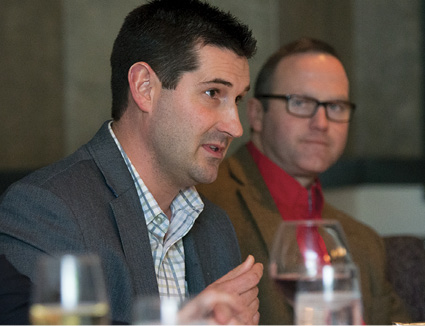
“All of the majors and financing partners could finance more, or provide some type of very low interest rate financing or lease for used pieces ...”
Schnoor: “AGCO’s pretty flexible on what they allow us to floorplan and for how long, and that’s helpful when we’re talking excess inventory. I think all of the majors and financing partners could finance more, or provide some type of very low interest rate financing or lease for used pieces. The financing component is very important to helping move those units and increasing the farmer’s confidence in his decision. AGCO is working hard on a certified pre-owned program and we’ve been a pilot dealer with them to make that happen.”
Connelly: “I agree — creative financing would help. There are times of the year when customers have more money; say they’re getting payments in beets or something, so we take that into consideration. I’ve seen more flexibility from Deere looking at that and trying to partner up with their dealers, so that’s a good sign.
“Farmers seem to expect 0% interest rates today. So it’s the warranty and fixed costs that are huge for them — they want to know that if their machine breaks they can pay a deductible, move on and not have to foot the cost of an engine replacement. There’s a certified program that Deere started pushing last summer. We’ve had our RDO Promise (uptime guarantee) where we cover a machine that goes down. We’ve found it to be good for business, but it costs a lot of money, too. I think Deere’s certified program will be a good one.”
Foster: “Yes, warranty options for the right piece of used equipment. Obviously, it’s got to be the right age and the right hours, but the ability for us to step in and extend the warranty or some type of backing would help. I’d also like to see more flexibility and consistency. No two customers want the same thing — some want financing, some want warranty, etc. I’d like to see us be able to respond to the individual customer’s hot button — warranty, waiver or low rate. Case IH has been somewhat flexible, but I don’t think they’ve been as consistent as they could be. Too often there’s one program out there one month and then changed the next.”
Johnson: “Not all dealers like it, but I like the win/win deals that they toss out once in a while — those things that tie an incentive for a used combine to a new order. That’s worked on some deals. We like when they change up the programs and give us a pinch point to work toward so we can go to our customer and say ‘You’ve gotta buy today — this program is going away at the end of the month.’ We like to sell under pressure and we sell a bunch. And if we don’t do as much the next month, that’s OK. Then next month, we’ll crank out the next program. It works for us.”
Q: Do you feel that your majors are adequately supporting you on your inventory concerns?
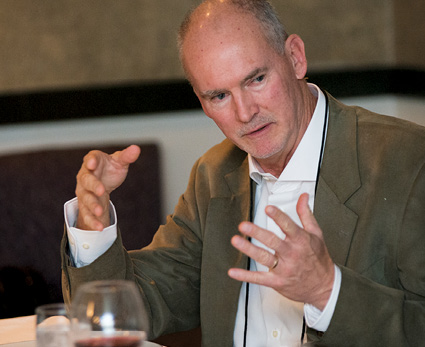
“How much of it is the major-line’s problem? I mean, if you want to be the dummy that goes out and trades combines with a guy for $25,000 or $30,000, well ...”
Johnson: “No, but how much of it is their problem? A lot of the used equipment problem is self-inflicted. I mean, if you want to be the dummy that goes out and trades combines with a guy for $25,000 or $30,000, well ...”
Schnoor: “I agree it’s the dealer’s problem. You bought it, and got yourself in a mess. I don’t think it’s the major’s responsibility to bail them out. But the majors always need to be concerned with the health of their dealer network. And to move new units, they’ll need to help the dealer move the used at the same time.”
Q: Instead of using market share — which can drive unintended actions — what measuring stick would you use to evaluate your dealers if you were in the major’s chair?
Connelly: “All of us could go out and ‘buy’ market share tomorrow, if you wanted to, and not make money. We made a conscious effort 18 months ago to do what’s right for our dealership and be sustainable for everyone. But you’ve got to be on the same page and be transparent.”
Johnson: “We happen to get fairly decent market share. But when you grow and buy a location without great market share, it’s a disincentive because you’re measured as a complex.
“I like bonuses based on your volume. I don’t see anything wrong with adding a financial incentive for doing the right things as a retail location, similar to what GM did with all its auto dealers. You know, rewarding you for putting the fancy front on your building, the right tile in your showroom and getting good customer scores on your surveys.
“Case has spent a huge amount on the infrastructure of this Pinnacle program (Case IH’s self-evaluation on parts, service, sales, financial health and facilities). It’s a good program, but there’s no financial incentive. I’m not saying our bonus should be based 100% on Pinnacle, but they could take some of the market share component away and add the Pinnacle components.”
Foster: “We as dealers should be measured on a balance between volume, customer satisfaction and financial health of the dealership. If a dealer who isn’t representing their product — assuming it’s good product for the area — they ought to hear from the major about it. They should be selling it. But to go in there and say it’s all about market share, and there are dealerships who somehow have 120% market share, well something’s not right.
“Half of your volume bonus is on market share, so if your market share falls, 50% of your bonus is gone. Pinnacle’s a good program, but maybe not all of the sections apply to all dealers. The best answer to the question is a combination of things.”
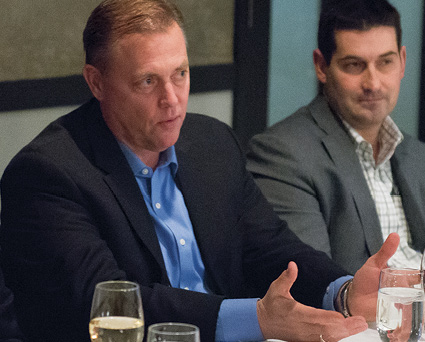
“Warranty and fixed costs are huge for them — they want to know that if their machine breaks they can pay a deductible, move on and not have to foot the cost of an engine replacement ...”
Connelly: “I agree that market share causes ‘creative’ stuff, and Deere scrutinizes its dealers very closely. But let’s say another OEM’s dealer dumps 35 tractors through a location where they need the market share. This goes on, just look at UCC filings. Our additive bonus is based on market share, so you can see what that does to us. And I know it’s supposed to be recorded in the county of first use. But to solve the problem will take continuous efforts between the dealer groups to figure out the best way to measure UCC filings going forward.
“I think market share has to be a component of the measurement. But one of the bigger issues in my region is AOR. I deal with inline competition, so I like Deere’s strategy in construction where if a competitive Deere dealer comes into your AOR, they would be penalized. I’d also like to see more teeth for aftermarket and investments made in things like training. We spend a lot of money there but it’s not as recognized as it could be.”
Schnoor: “Actually, I think AGCO has a pretty fair program right now. Ours is more volume focused than anything. There are factors for parts performance, in-stock, training and what we’re doing facility-wise that go into the volume calculation, but market share is only about 30% or so.”
Q: You get $1 dollar to invest in your dealership. Where is that $1 best spent for ROI?
Schnoor: “I’m going to put 100% of it toward people. It’ll get spent in either training/development or recruiting, to get the right people in the right places. Right now, it would probably be in service techs, but that wouldn’t be the only spot that I’d look at. You’ve got to always look for the right people for your dealership.”
Connelly: “Yes, and probably in capital investment to increase the efficiencies of those technicians, whether it’s cranes, better performing vehicles, etc. Efficiency and safety are things that deliver a huge bottom-line savings.”
Foster: “That’s a tough one. Marketing brings revenue, and we know what we’re getting for our dollar because we track everything in our advertising, including Web hits, email opens and sales. In fact, no one can close a sale without noting where the lead originated. Right now, I’d spend it on our used equipment, but for the long haul, I’d invest in facilities. Everywhere we’ve built a shop, we’ve seen quick, exponential growth in our service departments, which grows your parts business at the same time.”
Johnson: “Well it’s kind of like the end of The Sting where Robert Redford’s character is asked if he’s going to stick around for his cut. ‘Nah’ he said ‘I’d only blow it.’ That’s kind of how I feel about an extra dollar. We’d probably give it away to a customer — to make one more deal. Yeah, we would. The opportunity to get a buyer — retail is where it all starts. You don’t need a truck driver, technician or a building if you don’t sell anything.”
Q: So you’re on your deathbed and have a few short breaths in your lungs to share with a young manager on the truths about running the business. What do you say?
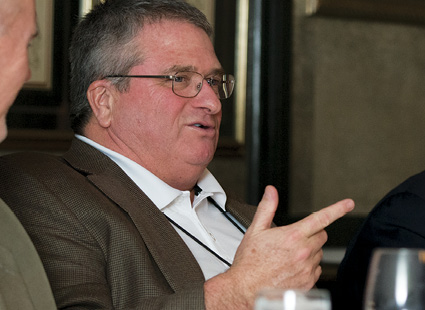
“We as dealers should be measured on a balance between volume, customer satisfaction and financial health of the dealership...”
Foster: “Get your butt out from behind that desk and go see your customers and build relationships; people buy from people. I’d also stress that you cannot do it all yourself. Empower your people and trust them.”
Johnson: “First of all, if I’m on my deathbed, I hope I’m not talking to a manager. That’s the last person I’d want to talk to. But my message would be ‘To do the right thing.’ We don’t always agree on exactly what the right thing is, but I want to go thinking I’ve done the right thing.”
Connelly: “Like Leo said, remember the golden rule — treat people right. And remember you are there to serve your family and friends too, and those you work with. If you treat people right, most of the time you’ll win, but sometimes you’ve got to suck it up.”
Schnoor: “I’d talk about balance. It’s all about balancing what you’re doing from a people standpoint to a financial standpoint. It’s all about making sure you’re balancing the whole act. I’d also tell them not to ever assume they know everything. From a personal perspective, I’d tell them to make sure they find passion in what they’re doing. If not, they aren’t in the right spot.”

